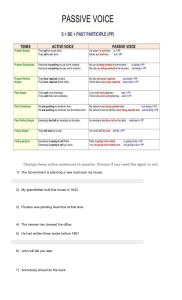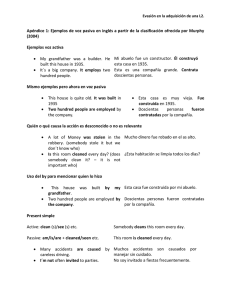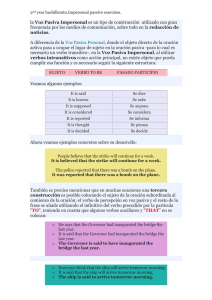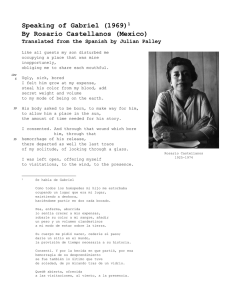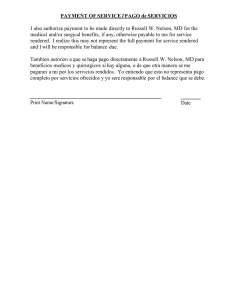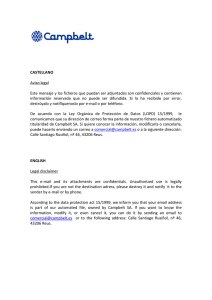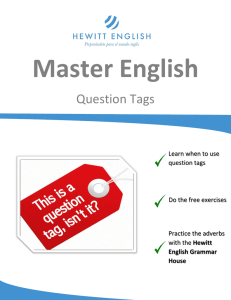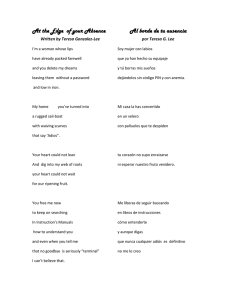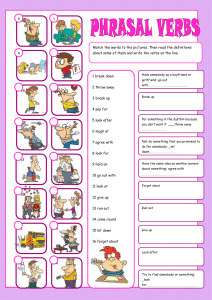The office is cleaned - RIA
Anuncio
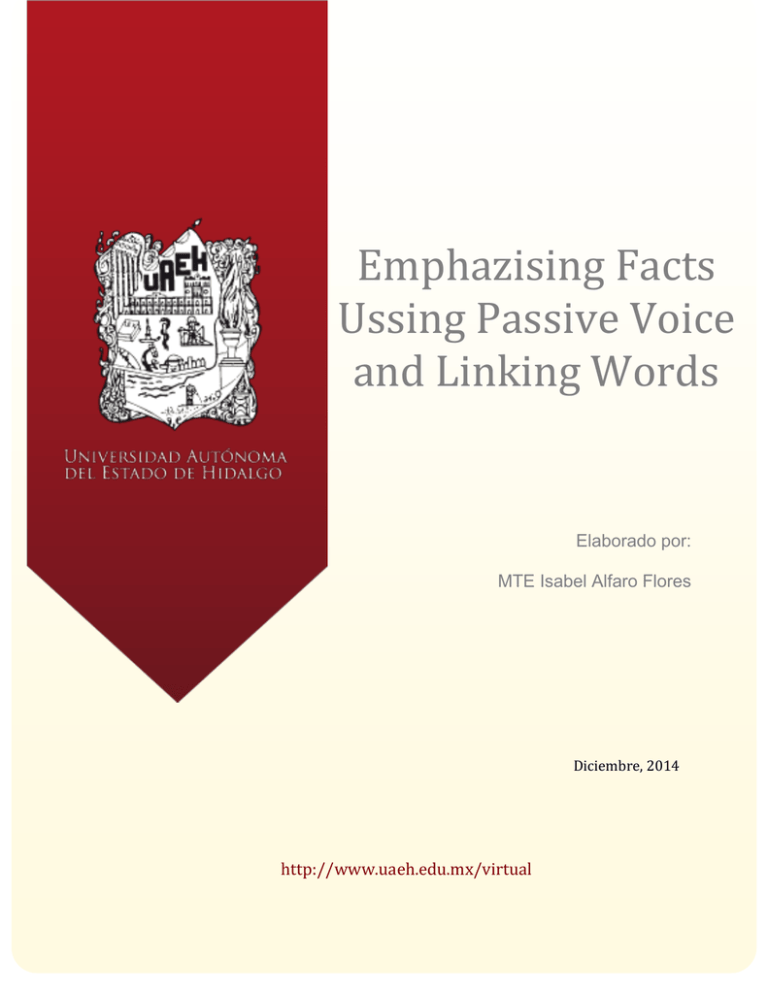
Emphazising Facts Ussing Passive Voice and Linking Words Elaborado por: MTE Isabel Alfaro Flores Diciembre, 2014 http://www.uaeh.edu.mx/virtual The office is cleaned every day. The office was cleaned yesterday. Compare active and passive: Somebody cleans the office every day (active) The office is cleaned every day (passive) Somebody cleaned the office yesterday (active) The office was cleaned yesterday (passive) La voz activa es el énfasis que tiene el sujeto en la frase mientras que la voz pasiva es el énfasis que se le da al objeto, por ejemplo: ACTIVE VOICE PRESENT TENSE PASSIVE VOICE ACTIVE VOICE PAST TENSE PASSIVE VOICE SUBJECT VERB OBJECT COMPLEMENT Alguien limpia la oficina todos los días Somebody cleans the office every day por alguien by The office is cleaned somebody La oficina es limpiada todos los días every day Alguien limpió la oficina ayer Somebody cleaned the office yesterday fue limpiada was cleaned por alguien by somebody La oficina The office ayer yesterday Past participle Simple present am / is / are Simple past was / were cleaned done (not) invented built injured taken, etc. El pasado participio de los verbos regulares es –ed (cleaned/damaged, etc), sin embargo hay verbos irregulares que se escriben muy diferentes a la raíz del verbo. Ejemplos: - Butter is made from cream. Oranges are imported into Canada. How often are these rooms cleaned? I am never invited to parties. This house was built 100 years ago. These houses were built 100 years ago. La forma pasiva se estructura de la siguiente manera: El verbo "to be" ya sea en presente o pasado (am, is, are / was, were) El objeto sobre quien recae la acción Not (en el caso de las frases negativas) El sujeto que realiza la acción (puede o no ir) OBJECT VERB “TO BE” IN CASE OF NEGATIVE SENTENCES PAST PARTICIPLE SUBJECT IN PRESENT TENSE This house is (not) built by my dad IN PAST TENSE This house was (not) built by my dad La voz pasiva puede ser adapatada a cualquier tiempo, observa los ejemplos de voz activa y su modificación a voz pasiva. En cualquier tiempo, la voz pasiva integra el verbo “to be” + el participio pasado del verbo en cuestión. Present Simple Past Simple Present Continuous Past Continuous Present Perfect Past Perfect Will Going to Must Can Should Have to Had to ACTIVE We make butter from cream How do they make butter? Somebody stole my keys When did they build these houses? PASSIVE Butter is made from cream How is butter made? My keys were stolen When were these houses built? They are building a new airport A new airport is being built When I was here a few years ago, they were building a new airport A new airport was being built when I was here, few years ago Somebody has stolen my car My car has been stolen Ann said that somebody had stolen her car I think they’ll invite you to the party She is going to write a book He must clean the office The can’t repair my watch You should wash it by hand They have to do the homework They had to take the injured man to the hospital Ann said that her car had been stolen I think you’ll be invited to the party A book is going to be written The office must be cleaned My watch can’t be repaired It should be washed by hand Homework has to be done The injured man had to be taken to the hospital USEFUL LINKING WORDS AND PHRASES Recuerda que un ensayo no debe ser meramente una lista de notas y subtítulos seguidos por una lista de viñetas acompañados de una o dos palabras. Un ensayo debe ser el desarrollo de un argumento, interpretación y análisis a través de amplias secciones narrativas. Utilizar las palabras de unión correctas ayuda a organizar lo que se quiere decir; también ayudan a presentar y desarrollar las ideas principales que formarán la base del ensayo en una estructura conectada íntimamente. Las palabras de unión ayudan a mantener el sentido entre una frase y otra y un párrafo y otro, con el objetivo de ayudar al lector a entender las ideas más fácilmente y claramente. Dichas palabras no deben ser usadas excesivamente puesto que ellas no transmiten un mensaje por sí mismas. Sequence Result Emphasis First /firstly, second/secondly, third/thirdly, etc. Next, last, finally In addition, moreover Further / furthermore Another Also The former, … the latter The following So As a result As a consequence (of) Therefore Thus Consequently Hence Due to This means that Undoubtedly Indeed Obviously Generally Admittedly Addition Reason Example In fact Particularly / in particular Especially Clearly Importantly And In addition / additionally / an additional Furthermore Also Too As well as Moreover Apart from Besides Indeed Or Too Nor In fact Let alone Alternatively As well (as this) What is more Actually Much less For Because Since As Because of Due to / due to the fact that Owing to / owing to the fact that For example For instance That is Such as Comparison Summarising Contrast Including Namely E.g. (example given) Similarly Likewise Also Like Just as Just like Similar to Same as Compare Compare(d) to / with Not only…but also Especially Including To illustrate In short In brief In summarise In a nutshell To conclude In conclusion However Nevertheless Nonetheless Still Although / even though Though But Yet Despite / in spite of In contrast (to) / in comparison While Whereas On the other hand Clarification On the contrary Unlike In theory… in practice That is (to say) I mean (to) put (it) another way In other words REFERENCE: Murphy, R. (2010). Passive 1. En (3a. Ed.), Basic Grammar in Use (pp. 44-47). Cambridge University Press. Lectura
